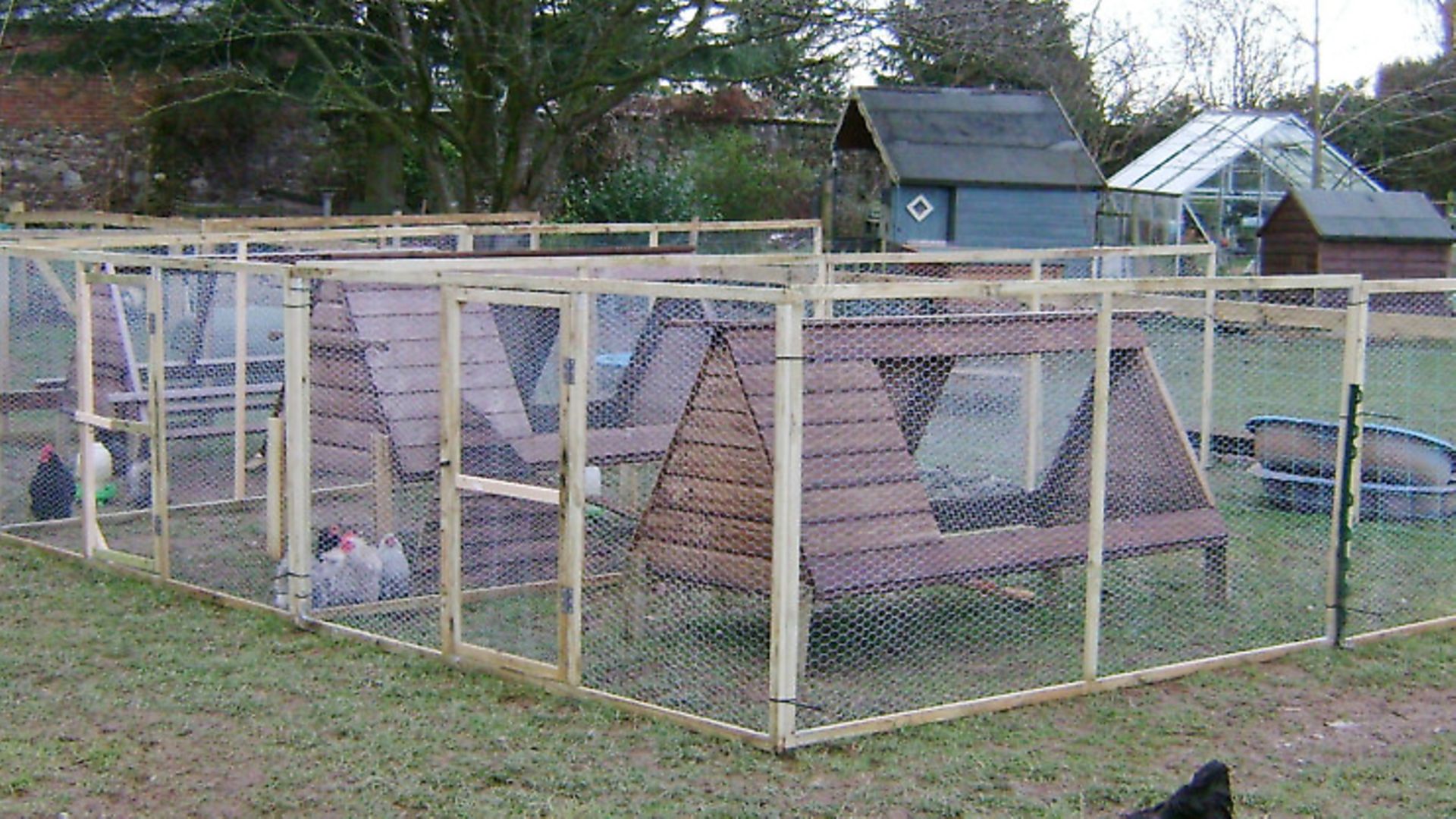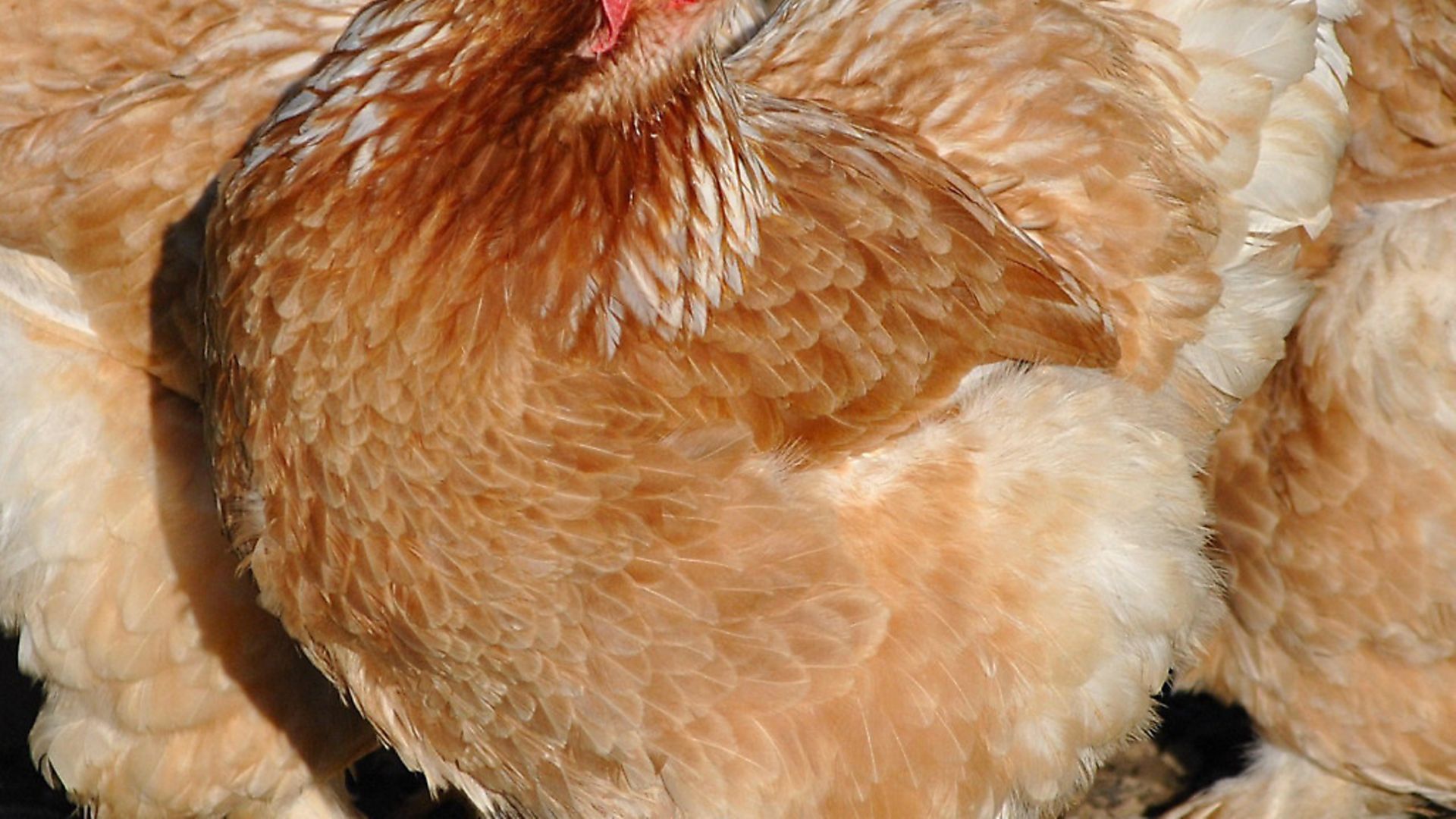The right run: Andy Cawthray advises on the best way to create a chicken run

Over the last few issues I’ve talked about the maze you enter when start out with chickens, looking at the reasons for keeping them and the pitfalls. I’ve also covered the essentials when it comes to housing. But what of the chicken run? Not everyone is lucky enough to free range their birds. Obviously, different breeds potentially have specific needs, but there are some general requirements that should be built into the enclosure.

First off, be realistic about the amount of space you have. Chickens thrive on space; they are by nature foraging creatures and tirelessly scratch around for insects. If the space provided is limited or overpopulated then it will soon be denuded of vegetation, insects, and tasty morsels. The ground will become littered with droppings that, come a heavy downpour of rain, will transform into a muddy mess, providing an ideal environment for disease. It can also cause behavioural problems, as the chickens become bored and begin to peck at each other. This pecking evolves to picking and pulling of feathers and exposed flesh, and can lead to full-blown cannibalism in extreme cases.
Location is key
As the keeper, think about the location of the run from your own perspective. It might seem like a good idea to put the chickens well away from the house or main part of the garden in summer, but what about in the depths of winter, when you have to trudge through snow, rain, and hail to reach them? The remote location might not be quite so appealing in those circumstances.
Pick a location that is out of the prevailing wind, and that gets some sunshine, but equally has some shelter. As descendants of jungle fowl, chickens are happiest with some overhead cover, so, if possible, locate the run under established shrubs or small trees that will provide some canopy cover for them. Obviously avoid damp areas – aside from the fact that chickens are not particularly keen on muddy conditions, a dry location will reduce the amount of mud and moisture being taken into the coop. And, if space permits, divide the area into two or three smaller runs so that you can rotate the space occupied by the chickens, thereby giving each of the other areas a chance to recover.
When considering the fencing options it’s important to understand its purpose fully before embarking on any ground works or purchases. It needs to be functional and practical. But, by the same measure, you may need it to be sympathetic to the other landscaping within the garden. The other element to consider is whether the fencing will be a permanent feature, semi-permanent, or temporary as this will also influence the materials you use.
Brick or stone walls, if built high enough, work very well as a permanent boundary option and, with the variety of construction materials available, it is possible to construct something that looks in keeping. Another more permanent option is the use of stock fencing. This comes in a variety of gauges or sizes, with some having a tighter mesh closer to the ground to deter rabbits. A fringe benefit is that it also prevents large fowl chickens and many of the bantam breeds from getting through. Be aware, though, that topping it with a rail may help it structurally, but it does mean you have offered a perch to any chicken that is capable of getting off the ground.
Hurdles
In terms of semi-permanent options, movable panels such as hazel hurdles can work very well. These provide an attractive way of shielding off an area of garden, and they are available in a number of sizes (height and length). They act as a windbreak to protect your flock and can also be moved around. On the down side, they can be quite expensive and, whilst they will last a number of seasons, they do not last indefinitely.
Another option is a fence frame covered with chicken wire. These are certainly functional and a good way to pen birds temporarily or to divide paddocks into separate breeding pens. These panels are not as attractive as hazel hurdles, but they do tend to last longer.
Then there are the temporary options such as plastic windbreak or electric fencing. The latter doesn’t need to be electrified if it’s being used for containment rather than anti predator fencing, and this can keep the investment costs down. Both of these fence types can be very handy as they can be rolled up and stored when not required.
Your fencing choices will depend on how permanent or flexible you need them to be. In most cases, a 4ft high fence will serve as a suitable barrier to most breeds of chicken and, if used in conjunction with wing clipping for the more flighty breeds, it should keep the birds contained. Do your research, though, because next to the chicken housing this can be quite an investment in terms of money and/or effort. In the end, though, hopefully you have created the ideal space for your flock to enjoy.
Image(s) provided by:
Getty Images/iStockphoto
Getty Images/iStockphoto







